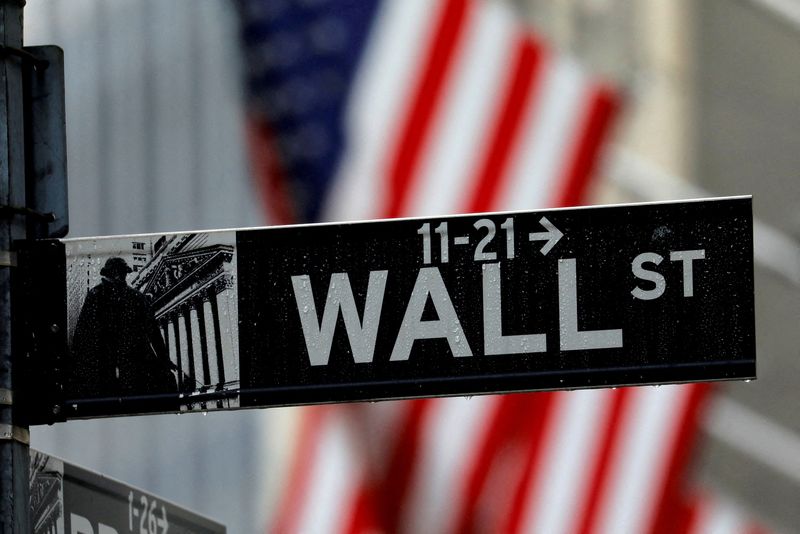By Noreen Burke
Investing.com -- It's set to be a quiet week on the economic data front and Federal Reserve policymakers are in their traditional blackout period ahead of their final policy meeting for 2022. Investors will be looking to Friday’s U.S. producer price inflation data for clues about how hawkish the central bank may be after four consecutive jumbo rate hikes to fight decades-high inflation. OPEC+ ministers are due to decide on output targets, while the Reserve Bank of Australia and the Bank of Canada are to deliver what will be closely watched interest rate decisions. Here’s what you need to know to start your week.
- U.S. data
The U.S. is to release November PPI data on Friday with the headline figure expected to rise 7.2% on a year-over-year basis, slowing slightly after an 8% increase the previous month. Core PPI, which strips out food and energy costs is also expected to cool.
Fed Chairman Jerome Powell said last week that it could be time to slow rate hikes, raising hopes that the central bank was closer to the end of its tightening cycle, but Friday’s jobs report showing that hiring remained strong last month while average hourly earnings increased muddied the outlook.
The U.S. is to release CPI data next week ahead of the Fed’s final meeting of the year on Dec 13-14.
Besides PPI figures, the economic calendar for this week also includes the ISM services PMI on Monday, along with the University of Michigan’s consumer sentiment index and Thursday’s weekly report of initial jobless claims.
- OPEC meeting
Representatives from OPEC+, which comprises the Organization of the Petroleum Exporting Countries and allies including Russia were meeting on Sunday to discuss output targets after the Group of Seven nations agreed a price cap on Russian oil.
On Friday, G7 nations and Australia agreed a $60 per barrel price cap on Russian seaborne crude oil in a move to deprive President Vladimir Putin of revenue while keeping Russian oil flowing to global markets.
Moscow said it would not sell its oil under the cap and was analyzing how to respond.
OPEC+ angered the U.S. and other Western nations in October when it agreed to cut output by 2 million barrels per day from November until the end of 2023. Washington accused the group and one of its leaders, Saudi Arabia, of siding with Russia despite Moscow's war in Ukraine.
OPEC+ argued it had cut output because of a weaker economic outlook. Oil prices have declined since October due to China's COVID lockdowns, slower global growth, and higher interest rates.
- Stocks
Last week saw the S&P 500, Nasdaq and the Dow Jones Industrial Average all notch up their second weekly gains in a row, with a 2% rise in the Nasdaq leading the way. The S&P added 1% for the week while the Dow was up 0.2%. Markets clawed back from lows on Friday after the strong November jobs report raised doubts over the Fed’s ability to slow the pace of rate hikes.
Investors have been looking for signs of weakness in the labor market, especially wages, as a precursor to faster cooling of inflation that will enable the Fed to slow and eventually stop its current rate hike cycle.
Stocks had rallied earlier in the week after Powell's comments on scaling back interest rates hikes as early as December.
However, while Chicago Federal Reserve Bank President Charles Evans made comments Friday that the Fed will probably reach a slightly higher peak funds rate, he still talked about stepping down the pace of rate hikes from recent 75-basis-point increases.
- Central bank decisions
Markets are expecting the Reserve Bank of Australia to keep the cash rate on hold at 2.85% at its upcoming meeting on Tuesday, after inflation slowed sharply in October, but economists are forecasting another quarter basis point increase before policymakers pause the current rate hike cycle.
That wouldn't necessarily cut short a rally in the Australian dollar, which recently has been driven more by China's re-opening hopes and a retreating greenback than the RBA.
Meanwhile, markets and economists are split about whether the Bank of Canada will hike rates by 25 or 50 basis points when it meets on Wednesday.
The BOC has raised rates by 350 basis points since March, one of its steepest tightening cycles ever.
- Eurozone
European Central Bank President Christine Lagarde is to make two appearances this week before the start of the ECB’s blackout period ahead of its final policy meeting of the year on Dec. 15.
Markets are leaning towards a 50-basis point rate increase at the ECB’s upcoming meeting after data last week showed that Eurozone inflation eased far more than expected in November.
With inflation running well above its 2% target, the ECB has hiked rates at its fastest pace on record this year and a string of hikes over the coming months is still likely.
But some policymakers have recently made the case for slowing the pace of increases after back-to-back 75 basis point moves, arguing that inflation is finally peaking.
--Reuters contributed to this report
